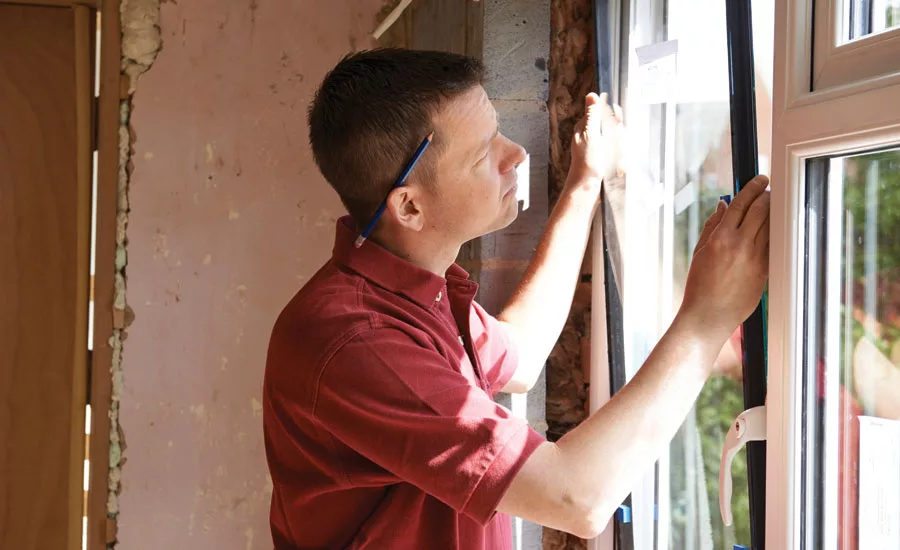Frustrating Times, or a Time of Opportunity?


As you begin to read this article, you may not believe that this is actually a message of hope for insurance restoration specialists who work so hard to serve the insurance companies and their policyholders. Yet, if you make it through the first few paragraphs, you will see the true impact and importance of your role in putting back together the lives of those in the midst of unexpected loss.
It’s a common occurrence to receive several emails throughout the month from restoration specialists venting about the enormous changes occurring with insurance companies and how it is impacting their operations. I would like to share one particular email I received that really caught my attention. It was simply titled “Frustrating Times”:
“Steve, I need a little time to vent and I know it won’t matter, but here it is. I believe some people within the insurance industry think that after a claim associate writes an estimate on-site and then leaves, that the claim has been settled. They might have written a check that day, but when the insurance company involves a contractor, that is truly when the real work begins. The contractor is revising estimates, explaining the whole process to the owner, helping the owner through the difficult time they are experiencing, and explaining to the owner why the work takes three weeks when they have a graduation in one week. It is left to us, the contractor, to explain why things aren’t getting paid for by the insurance company, why only three sides of vinyl siding are being allowed rather than siding for the entire house. We must explain to the owner why they have to go pick out lights, floor covering, paint, etc. We have to explain to them why we can’t work at their house after 5:00 pm and on the weekends when they are at home. The list goes on and on. I know you know all of this, but it is really hard to swallow when we go above and beyond and work really hard to help these people and then are told by the insurance company that we aren’t worth enough to get adequately paid for it. Thanks for listening!”
I can’t disagree with this frustrated contractor. Being a service provider to the insurance industry has become somewhat of a thankless and demanding partnership, but I also don’t think this frustration is specific to the insurance industry. In today’s ultra-competitive world, companies set customer expectations so high that the consumer does not realize all that goes on behind the scenes to ensure those high, and sometimes unrealistic, expectations are met. The consumer, rightfully so, expects what has been promised to them by the insurance company to magically happen. There is more pressure than ever on insurance restoration specialists to “just make it happen” and uphold the expectations that were set by the insurance company.
With the rapid growth of technology, changes in case law, creation of preferred contractor programs and a talent drain with hiring experienced claim associates, the pressure is only going to increase for the insurance restoration specialist. In an article found on emarketer.com called, Can Companies Keep Up with Soaring Customer Expectations, it states, “The majority of business leaders worldwide said customers wanted access to services faster than ever as well as 24/7 connectivity due to technological innovations, and half wanted access on an increasing number of multichannel services. Personalization, transparency and collaboration were also trending.” Talk about pressure!
Gloom and doom for the industry, right? Absolutely not! Many times opportunities are disguised as challenges, and we’ve been waiting much too long for a viable solution. Yes, change is occurring and the insurance restoration industry will not be the same as it has been in the past. That being said, if you decide to sit back and wait to see what happens, I guarantee you will miss this opportunity as your proactive competitors become the provider of choice to the insurance company.
So how do you, as an Insurance repair specialist, prepare for the impending rapid change? It starts with understanding your role in the insurance claim process and the expectations others hold within this process. In the past, the quality of your workmanship would determine if you were part of the insurance carrier’s recommended list. Today, quality is no longer a benefit of a good contractor, it is an expectation of every contractor. That being said, what insurance companies primarily look for when partnering with a repair specialist is how that contractor is going to perform for their customer throughout the entire claim process. Let’s face it, repair specialists are good at understanding the repair process, but very few understand the insurance claim process. It is not only important for owners and senior leaders to know the insurance claim process, but paramount that everyone who comes into contact with the insurance customer understands it.
So what can you do as a company? I recommend you try to implement the following critical items into your organization and ignite the start of a culture that is committed to understanding the entire insurance claim process. Because of that commitment, the relationship between you and the insurance carrier will strengthen:
- Have active and engaged ownership and senior leadership. Owners and leaders must buy into the culture and processes that are needed to strengthen the partnership between restoration contractors and insurance carriers. If leaders are not actively engaged in developing that culture, you won’t find success in the insurance restoration business.
- Acquire explicit knowledge and understanding of the insurance industry and claim settlement process through consultants. Having someone on your staff or someone you can consult with regarding the claim process is pertinent. Inside knowledge of processes and procedures will help you determine what you can implement to be a successful partner.
- Establish best practices and processes. Implement practices and processes that are strategic and line up with not only the claim settlement process, but the expectations of the person who is experiencing the claim.
- Consistently and regularly analyze those practices and processes. Have a good quality control program in place that utilizes Key Performance Indicators (KPI’s) which measure the things that are important to the insurance carrier and their customers. It’s the interpretation of the data that is collected and analyzed that becomes most important in this step.
- Establish a culture of continuous improvement. Do this by having opportunities available for your crews that help educate them about the industry and the importance of the vendor /carrier relationship. Make sure this education can be used to measure performance. In a January 20th, 2015 article found at industryweek.com, Eric Bigelow states that “Continuous improvement (in its purest sense) actually demands that leadership support others in their development”. See critical items #1 above again. You must make sure leadership is on board and leading the charge of continuous improvement or it will not work.
What we know for certain is that the industry will continue to change and evolve. If you make a decision to change and evolve with it, you will find success and you will establish lasting relationships with insurance carriers that will continue to foster the profits of your company now and in the future. Relationships can last forever if you are willing to accept the fact that a relationship is ever changing and you must change with it to continue to foster it.
Looking for a reprint of this article?
From high-res PDFs to custom plaques, order your copy today!






